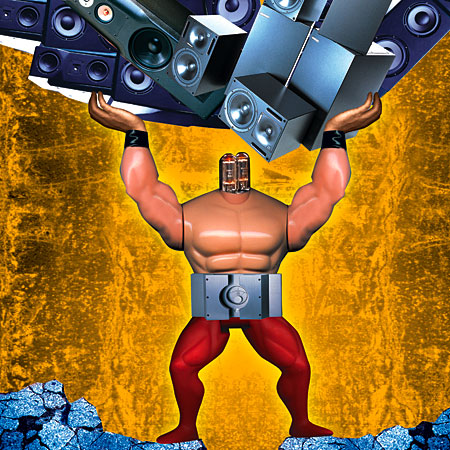But is power consumption predictable? On the speaker's end, if you had all the specs, could you precisely determine your real world headroom needs and set them apart from what is simply an excess? Could you differentiate among under powered speakers and idle power never being used, easily?
I'm asking because I have some plans on changing my amp. I'm trying to guess right what I need.
Yes, within reason, and assuming you have all the prerequisite parameters. But you can almost always get a reasonable estimate with more limited information. Here are the steps to gain a ballpark estimate:
First, look up the sensitivity of your speakers, usually expressed in dB/W/m. You also need to know their nominal impedance in ohms, the distance you sit from the speakers, and how close they are to the walls around them. It is helpful to know their minimum impedance to ensure your amplifier can handle that, but generally the assumption is that minima are fairly narrow in frequency (and large sonic peaks short in duration) so an amp rated for their nominal impedance will be able to handle the minima in impedance without overstress.
Next, estimate your average listening level, either measuring with an SPL meter or using an SPL comparison table (the calculator site has a table). You can use an online calculator like this:
http://myhometheater.homestead.com/splcalculator.html to estimate how much power is required to reach your average listening level. You can also use it to estimate your peak power needs if you know how loud you ever expect it to be.
A rule of thumb for peak-to-average levels in music is 17 dB, a power factor of 50. That means you should have 50 times the average power to handle peaks without clipping. Much music may have less than that dynamic range, and movies are reputedly higher (perhaps 20 dB, a factor of 100x in power, though some have reported 30 dB, a factor of 1000x). I tend to discount movie peaks somewhat as higher distortion and even hard clipping on an explosion or gunshot is not likely to be noticed.
I listen at average levels closer to 70 dB, maybe 75 dB for some music, and peaks around 90~95 dB typically. I find 80 dB average very loud but YMMV. I chose amplifiers to reach 105 dB (per THX) just to be allow for louder than I ever expect to listen, but don't really expect to hit those levels. I also use subs so I know the midrange power is likely significantly (say 10 dB, a factor of 10 in power to 20 dB -- 100x in power) less (see equal-loudness curves).
Armed with that knowledge you can choose the amp you need.
IME most people overestimate their average listening power needs, but underestimate how much extra is needed for peaks. That is, they underestimate the peak-to-average power ratio. Many folk (again IME) think they listen at an average power of 10 to 50 W whereas it is really only a few watts (often close to 1 W). However, they think 3 dB to 6 dB of headroom is sufficient, but it is more like 15 to 20 dB. So they think they are using 50 W average and need 3 dB headroom (100 W), but in reality it is more like 1 W average and still 100 W max for (20 dB) peaks.
IME/IMO/FWIWFM/my 0.000001 cent (microcent)/YMMV/etc. - Don


